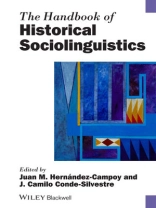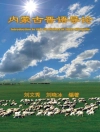Written by an international team of leading scholars, this groundbreaking reference work explores the nature of language change and diffusion, and paves the way for future research in this rapidly expanding interdisciplinary field.
* Features 35 newly-written essays from internationally acclaimed experts that reflect the growth and vitality of the burgeoning area of historical sociolinguistics
* Examines how sociolinguistic theoretical models, methods, findings, and expertise can be used to reconstruct a language’s past in order to explain linguistic changes and developments
* Bridges the gap between the past and the present in linguistic studies
* Structured thematically into sections exploring: origins and theoretical assumptions; methods for the sociolinguistic study of the history of languages; linguistic and extra-linguistic variables; historical dialectology, language contact and diffusion; and attitudes to language
Cuprins
Preface (Teresa Fanego)
Introduction (J.C. Conde-Silvestre and J.M. Hernández-Campoy)
Part I: Origins and Theoretical Assumptions
1. Diachrony vs Synchrony: The Complementary Evolution of Two (Ir)reconcilable Dimensions (Jean Aitchison)
2. Historical Sociolinguistics: Origins, Motivations and Paradigms (Terttu Nevalainen and Helena Raumolin-Brunberg)
3. Social History and the Sociology of Language (Robert Mc Coll-Millar)
Part II: Methods for the Sociolinguistic Study of the History of Languages Methodological Issues
4. The Application of the Quantitative Paradigm to Historical Sociolinguistics: Problems with the Generalisability Principle (J.M. Hernández-Campoy and Natalie Schilling-Estes)
5. The Uniformitarian Principle and the Risk of Anachronisms in Language and Social History (Alexander Bergs)
6. The Use of Linguistic Corpora for the Study of Linguistic Variation and Change: Types and Computational Applications (Pascual Cantos)
Sources
7. Editing the Medieval Manuscript in its Social Context (Nila Vázquez and Teresa Marqués-Aguado)
8. Medical, Official and Monastic Documents in Sociolinguistic Research (Laura Esteban-Segura)
9. The Use of Private Letters and Diaries in Sociolinguistic Investigation (Stephan Elspaß)
10. The Use of Literary Sources in Historical Sociolinguistic Research (K. Anipa)
11. Early Advertising and Newspapers as Sources of Sociolinguistic Investigation (Carol Percy)
Part III: Linguistic and Socio-demographic Variables
12. Orthographic Variables (Hanna Rutkowska and Paul Rössler)
13. Phonological Variables (Anna Hebda)
14. Grammatical Variables (Anita Auer and Anja Voeste)
15. Lexical-Semantic Variables (Joachim Grzega)
16. Pragmatic Variables (Andreas H. Jucker and Irma Taavitsainen)
17. Class, Age and Gender-based Patterns (Agnieszka Kielkiewicz-Janowiak)
18. The Role of Social Networks and Mobility in Diachronic Sociolinguistics (Juan Camilo Conde-Silvestre)
19. Race, Ethnicity, Religion and Castes (Rajend Mesthrie)
Part IV: Historical Dialectology, Language Contact, Change and Diffusion
20. The Teleology of Change: Functional and Non-Functional Explanations for Language Variation and Change (Paul Roberge)
21. Internally and Externally Motivated Language Change (Raymond Hickey)
22. Lexical Diffusion and the Regular Transmission of Language Change in its Socio-historical Context (Brian Joseph)
23. The Timing of Language Change (Mieko Ogura)
24. Innovation Diffusion in Sociohistorical Linguistics (David Britain)
25. Historical Dialectology: Space as a Variable in the Reconstruction of Regional Dialects (Anneli Meurman-Solin)
26. Linguistic Atlases: Empirical Evidence for Dialect Change in the History of Languages (Roland Kehrein)
27. Historical Sociolinguistic Reconstruction beyond Europe: Case Studies from South Asia and Fiji (Matthew Toulmin)
28. Multilingualism, Code-switching and Language Contact in Historical Sociolinguistics (Herbert Schendl)
29. The Impact of Migratory Movements on Linguistic Systems: Transplanted Speech Communities and Varieties from a Historical Sociolinguistic Perspective (Dani Schreier)
30. Convergence and Divergence in World Languages (Roger Wright)
Part V: Attitudes to Language
31. Sociolinguistics and Ideologies in Language History (James Milroy)
32. Language Myths (Richard Watts)
33. Linguistic Purism (Nils Langer and Agnete Nesse)
34. The Reconstruction of Prestige Patterns in Language History (Anni Sairio and Minna Palander-Collin)
35. Written Vernaculars in Medieval and Renaissance Times (Catharina Peersman)
Despre autor
Juan Manuel Hernández-Campoy is Professor in
Sociolinguistics at the University of Murcia, Spain, where he
teaches undergraduate courses on English Sociolinguistics,
Dialectology, and the History of English, as well as
sociolinguistic research methods for postgraduate students. His
books include Diccionario de Sociolingüística
(with P. Trudgill, 2007), Metodología de la
Investigación Sociolingüística (with M. Almeida,
2005), and Geolingüística (1999).
Juan Camilo Conde-Silvestre is Professor in English
Historical Linguistics at the University of Murcia, Spain, where he
teaches on the History of the English Language and Research Methods
in Language Variation and Change. His books include
Sociolinguistica Histórica (2007), Sociolinguistics
and the History of English (with J.M. Hernández-Campoy,
2005) and Variation and Linguistic Change in English (with
J.M. Hernández-Campoy, 1999).












